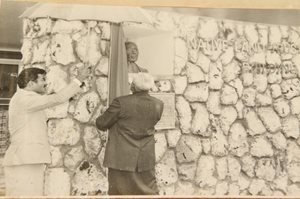 A Brief History
A Brief History
The then Native Land Trust Board (NLTB) now known as the iTaukei Land Trust Board (TLTB) derives its existence from the Native Land Trust Act of 1940. A brief history of the land in Fiji will assist us to understand the reason behind its creation.
At the time when Fiji was ceded to the British Crown in 1874, there were many foreign occupiers and claimants to areas of Fijian land. These had come about through dealings between chiefs and European beachcombers, but resident Governor Sir Arthur Gordon stopped all land sales immediately after Cession.
In 1876, a commission under Victor Williamson was set up to investigate all claims titles to these lands. Many claims were refused and many more reduced. Even so, some 400 000 acres of Fijian land were registered in freehold title as Crown Grants. These freehold land represented a substantial proportion of the good agricultural land of Fiji. By 1880, it was realised that all land recognised to be owned by Fijians would have to be recorded and registered and also that there would have to be an authority to settle boundaries and ownership disputes. The Native Land & Fisheries Commission (NLFC) now known as the iTaukei Land & Fisheries Commission (TLFC) was established in 1880 to enquire and investigate claims to land by the indigenous landowners. At the same time a leasehold system was created where land could be used on a 21 year lease agreement. Negotiations were carried out directly between the iTaukei landowners and the prospective tenants. From a brief period between 1905 and 1909, outright sales of itaukei land continued to be forbiddened. At that same period the Great Council of Chiefs were suspended to allow the acquisition of certain iTaukei Land for public purposes and registered as Native Grants.
However, as the plantation system declined and Europeans left agriculture, the land problem became one peculiar to Fijians of Indian-decent. Their need was different - they wanted small family farms.
At this stage the land problem can be summarized as follows:
-
Obtaining lease was cumbersome and expensive for the prospective lessee.
-
The Fijians of Indian-decent were naturally choosing only the best land for their leases thus bring about the haphazard piecemeal pattern of land use.
So in 1916 a Native Lease Ordinance was passed which handed over all land available for leasing to the Government which would lease the land on the owner’s behalf and leases were now to be for a period of 21 years with a possible extension of 10 years.
Mounting Land Problems in Fiji
The Ordinance failed to solve the difficulties as Fijians of Indians decent still had to negotiate directly with the iTaukei owners for leases of better quality agricultural land. During this period the land problems in Fiji became more acute due to important developments in the country such as:
-
Abolishment of the indenture system that led to large numbers of Indians becoming free settlers in Fiji which led to a sudden pressure for more farming land.
-
Active encouragement by government and the Colonial Sugar Refining (CSR) Company to Fijians of Indians decent to settle in Fiji and become agriculturists, especially cane farmers.
-
Rapid growth of both Fijians of Indians decent and the iTaukei population.
Landowners' Grievances
-
Under the 1916 legislation they were required to pay compensation to the lessee for improvements to the land in the event of non-renewal of a lease which would be very costly;
-
Some iTaukei were becoming anxious to enter commercial agriculture for themselves; and,
-
They were anxious to safeguard the availability of the land for themselves and their descendants.
There were many debates in the 1930’s about the land issue in the Legislative Council, in the Great Council of Chiefs meeting, in villages and settlements and in Government circles. The government held discussions with leading chiefs with the view to devise a better system of landlord and tenant relations. The leading figure in these discussions was the late Ratu Sir Lala Sukuna. In 1936, the Great Council of Chiefs resolved that it was in the best interest of the iTaukei Poeple that all lands not required for the use and maintenance of landowners be opened for national development.
These debates and deliberations gave birth to TLTB in 1940.
Current Strategic Direction
- GCC Meeting and Vakaturaga Conference.
- Meeting with Chiefs to strengthen relationships with all confederarcies:-
- Presentation to the Office of the President - Taukei Bolatagane - Na Turaga na Tui Macuata; Hon. Ratu Wiliame Katonivere.
- Presentation to the Turaga na Vunivalu - Na Tui Kaba - Ratu Apenisa Cakobau
- Presentation to Gone Marama Bale Na Roko Tui Dreketi - Ro Teimumu Kepa
- Presentation to the Turaga na Tui Cakau - Hon. Ratu Naiqama Lalabalavu
3. Legislation Reviews (34 alaws): including the Surfing Act, Forestry Act, Mahogany Industry Act, Minig Act and River & Gravel Guideline.
4. New Business Initiative Awareness at provincial and tikina level.
5. Strategic Corporate Planning and Senior Managers Monthly Meeting taken to villages to reconnect with landonwers.